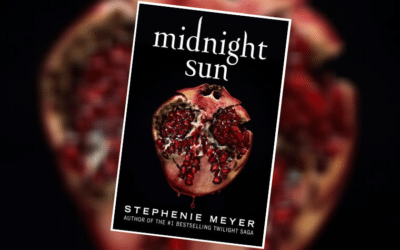When Jamie told us about it, I knew I would probably spend a few hours eating taco salad and enjoying it because it’s a Margaret Atwood adaptation after all (although I haven’t read the book), and a period piece to boot. It is female written (SARAH POLLEY!) and directed. It has cravats and candlelight.
But I was more than a little surprised that from the get-go, from scene one, I wasn’t just watching another period piece.
Sarah Gadon as Grace Marks
As I relate all actresses to my fandoms, I knew Sarah Gadon from her stints in David Cronenberg/Robert Pattinson vehicles, Cosmopolis and Map to the Stars. I also loved her in 11/22/63 even though I thought she was almost too beautiful to play the role of Sadie in that series.
She’s almost too beautiful for Grace Marks as well. She plays this character with a perfect homage to its name. Of course, there is the superficial: her flawless skin and coloring and eyes and doll-like features. There are enough people in the series itself discussing her attributes for me to do it here. Sarah Gadon is gorgeous. That’s not the point. She’s piercing in this. She’s magnetic. We spend a good deal of screen time simply looking into her face, and none of it is wasted narratively.
In the first scene, we stare into Grace Mark’s face as she relates to us that she’s been called many things. As her voice rolls over each of them, Sarah rolls through the physical manifestations of those attributes. Haughty, humble, slow, manipulative. Grace asks, “how can I be all these things at once?” as we watch her morph into them all on a dime.
In one opening, she has turned herself into the subject of the series and the object of everyone else’s scrutiny, rumor-mongering and cause. And with those sly turns of countenance, she’s proven herself the unreliable narrator so many others deemed her be. She becomes all the things she says she’s been called, for the audience as well as for her most ardent observer, Dr. Jordan.
In one early moment of the first episode, we are assured that this woman, whose word is all we (and Dr Jordan) have to go on for who she is and what she’s done, cannot be trusted. There are innumerable layers of meaning that Grace’s mind ascribes to the apple that he presents her. Her face tells us she knows he’s testing her. Her reticence to bite it tells us she doesn’t trust him and is also too proud to appear hungry, but her deep inhale shows she isn’t too demure to show her lust. Her thoughts flash to what sense memory dredges up for her: Mary Whitney’s friendship. Her words are straightforward and wholesome as apple pie, but as we know from her thoughts, a blatant lie. And her voiceover – her letter to the doctor himself – tells us she perfectly comprehends the deeper metaphor, and resents the implication that she might miss it. Oh, she’s as unreliable as they come.
A Short Word About Voiceovers: This is how you do them. Consistently throughout the series with narrative impetus and drive. Underscored not by the physical acts they are describing but by flashes of memory – both past and present – that provide a puzzle for the viewer and a palette of images for the show.
Edward Holcroft as Dr. Jordan
Despite being a fan of the Kingsman series (honestly, I would be all in with that fandom if I had any extra time to devote to slashfic, but alas Yuri On Ice takes up all the space in my life that I have for that type of nonsense), I was desperately and sadly unaware of Edward Holcroft and his perfect British regency name and his perfect British moue.
 More of this tortured look, please. Just … a whole season of more of this. source
More of this tortured look, please. Just … a whole season of more of this. source
But here he comes just a bee-bopping into my consciousness with his Perfect Period Profile™ and his swoopy hair and his doctorly concern and his soft observance. There is a perfect regency hero in Dr. Jordan, who sits with Grace as an equal and listens to her story with direct eye contact and sincere veneration. There’s clearly a simmering beneath the benign surface of their meetings, but he is always appropriate, even and restrained. SO restrained.
The truth is more furtive. He wants Grace in the same way that all men want beautiful, vulnerable women under their power. This makes him a cad. But he is gentle with her, and the soul of self-denial, and this makes him the romantic hero. Oh, it’s a paradox.
Edward Holcroft makes falling a little bit in love with Dr. Jordan a pleasure. As the tortured and intellectual soul of this story, I can’t imagine enjoying watching anyone else suffer through a really conflicted hard-on for six hours.
 This man is in many different types of pain; I will soothe. source
This man is in many different types of pain; I will soothe. source
And how do we rectify the gentle doctor with the man who callously ruts another woman to sate an ache for another? How do we root for that longing look to turn into a kiss when his dreams of wrapping Grace in his arms are misplaced fantasies of chivalry for a woman who has shown no honest interest in being saved? Who is observing whom here? Who is unraveled and who is freed in the end?
One more thing … Quilts as Metaphor
This show made me want to make and study and become a freaking expert on quilts. Meghan O’Keefe already wrote a great piece about how awesome the quilts on this show are, and a bunch of other outlets discussed their oh-so-important historical significance. But I would be remiss if I didn’t reiterate Meghan’s point: no other show has ever made me care about quilts like this one. They don’t make you wait for the point either – the first episode gives away the quilting game with a great monologue about their significance to womankind and the violence done to us there.
Warnings. Flags. Draped over the most dangerous, and now the most noticeable, thing in a room. This monologue alone will get me picking up the book ASAP.
There are so many other reasons to watch Alias Grace RIGHT NOW … seriously, stop whatever else you are doing … but I contend the paradoxical and juxtaposed dynamic between Grace and Jordan will be enough to entice you and keep you enthralled. It was enough for him.




